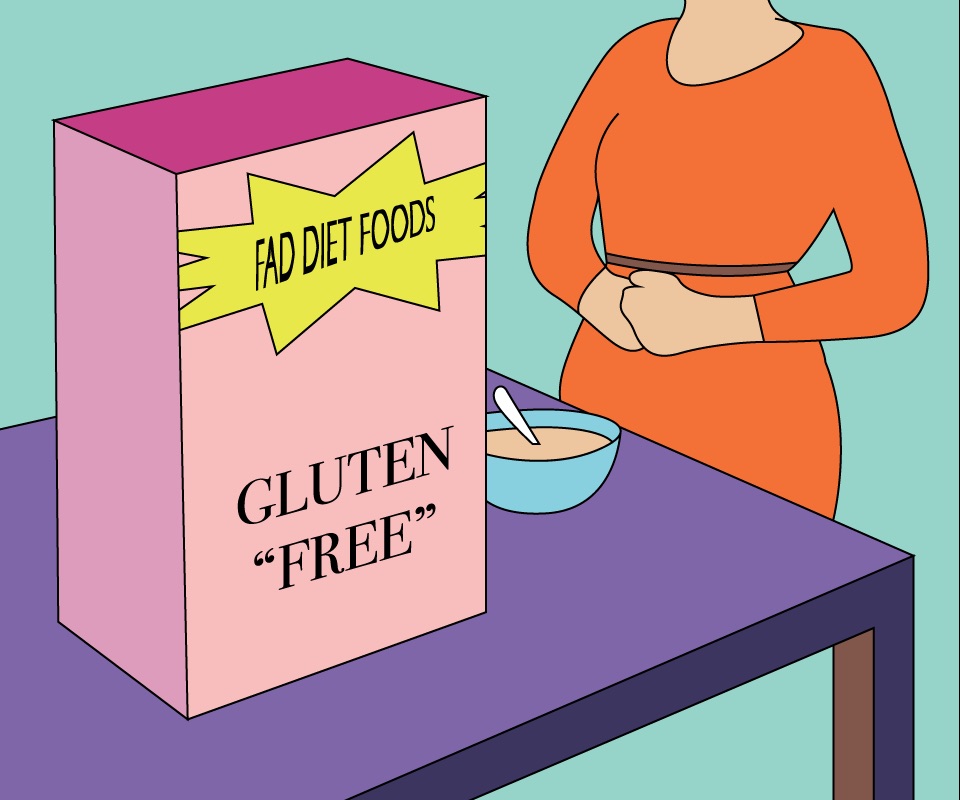Those who are physically unable to eat gluten can’t rely on incomplete and false labels
In July 2018, I was given two choices by my doctor: either I join high-profile celebrities such as Gwyneth Paltrow and Lay Gaga in their gluten-free diet fad, or I continue eating gluten and destroy my small intestine. I was diagnosed with celiac disease, meaning that whenever I consume any food product that contains gluten, my immune system is triggered and begins to attack my small intestine, causing physical pain, and the inability to absorb nutrients, leading to vitamin deficiencies and anemia.
Following a gluten-free diet, whether to lose weight or to “live a healthier lifestyle,” has become popular. With high-profile celebrities praising their gluten-free diet, which is aimed at reducing the chance my intestine turns into a balloon, gluten-free foods have become much more common in the aisles of your local grocery store.
While the increasing amounts of gluten-free options in stores may seem like a good thing––especially for those of us who suffer from wheat-related allergies––it really isn’t. I believe food companies aren’t taking the risks of cross contamination seriously enough. Food products labelled “gluten-free” still contain traces of gluten, which won’t affect someone who is only gluten-free to lose weight but will have negative effects for celiac patients.
Since my diagnosis, I have tried my best to stay as gluten-free as I can in order to live my life as pain-free as possible. However, the gluten-free culture that we’re living in is leading me to accidentally consume gluten at least once a week––and it’s causing me extreme physical pain.
In the six months following my diagnosis, it’s happened too often that I’ve eaten something labelled gluten-free only to later read the ingredients and discover that the product may contain wheat. The food industry doesn’t seem to understand that gluten-free food is not just for people who want to be healthier and lose weight––some of us need to be gluten-free in order to live a normal life.
According to the Government of Canada, in order to be able to label a food item as gluten-free, the product must contain less than 20 parts per million of gluten, which is equivalent to 20 grains of sand. While 20 parts per million of gluten seems like nothing, Very Well Health notes that gluten consumption as low as 50 milligrams per day––which is equivalent to around 1/70th of a slice of bread––can cause intestinal damage to those with celiac disease.
This idea that gluten-free is nothing more than a fad is harmful to those of us who suffer from celiac disease. Food industries are trying to hit a new market, and while they may have good intentions, they aren’t being careful enough to ensure that their “safe” products don’t actually contain gluten.
In a perfect world, gluten-free foods would only be produced in purely gluten-free facilities to ensure that there are no risks of cross contamination. However, no matter how much I would love for this to happen, expecting companies to be willing to spend the time and resources needed to create products that are 100 per cent gluten-free is just wishful thinking. Instead, when producing gluten-free items, the food industry should label how many gluten parts per million the product contains.That way, those of us with celiac disease can decide if it is worth the risk.
Graphic by Ana Bilokin




